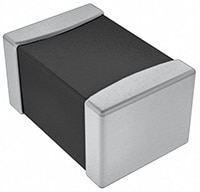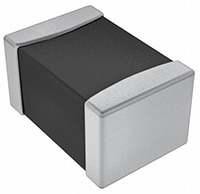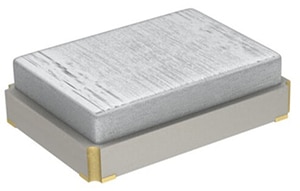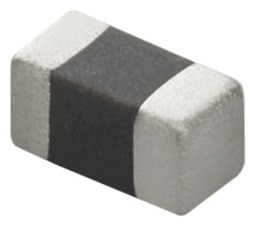The Future of Driving is Autonomous—See How It Can Be Done Seamlessly and Reliably
投稿人:DigiKey 北美编辑
2024-09-27
The latest advancements in autonomous driving components are making “hands-off” a reality for many drivers. However, there remains reluctance and skepticism among many drivers as to the safety and reliability of truly autonomous vehicles.
The automotive sector is moving closer to the autonomous vehicle, and it is only gaining momentum with the goal of not just making the driver’s life simpler, but also eliminating collisions on the road.
Autonomous vehicles are already on the road, as the industry is committed to making this form of transport universal—a future that is only a few years away.
With the demand for autonomous vehicles growing, there is a concurrent demand for more sophisticated Advanced Driver Assistance Systems (ADAS) and a sophisticated range of integrated solutions. Such devices require robust and sensitive filters to protect the electronics necessary to meet stringent government safety standards.
In addition, devices like EMI filters will prove crucial in supporting the widespread adoption of autonomous vehicles by offering a combination of security, safety, and support.
EMI filters protect sensitive electronics
The systems that drive an autonomous vehicle require quality components, including EMI filters, such as the BLM21H series from Murata Electronics.
EMI filters protect sensitive electronics from high levels of radiation emitted by other electronic equipment—radiation that can cause extensive damage. Filters in the BLM21H series, such as the BLM21HE601SH1L (Figure 1), extract unwanted current that is conducted through wiring or cables, which can wreak havoc and interfere with signal and power lines, while simultaneously allowing desirable currents to flow without impedance or restriction.
 Figure 1: The BLM21HE601SH1L EMI filter extracts unwanted current conducted through wiring or cables. (Image source: Murata Electronics)
Figure 1: The BLM21HE601SH1L EMI filter extracts unwanted current conducted through wiring or cables. (Image source: Murata Electronics)
Ensuring stable power with inductors
Power inductors are passive devices that store energy in their electromagnetic fields and are vital components in power supply circuits and DC/DC converters. Utilized with PMICs as step-down (buck) converters, power inductors are key components that affect the performance of the power conversion process. For example, if the load is increased suddenly, there will be a drop in the output voltage, resulting in an abnormally large peak current through the power inductor to charge the output capacitor. The value of a power inductor affects the transient response of the converter. Small inductor values speed recovery time, while larger values increase it.
These inductors need to be volumetrically efficient with a small, printed circuit board (PCB) footprint and low profile. They should be able to operate at power switching frequencies in the range of 2 to 10 MHz, while handling high transient loads with the possibility of high saturation currents. Like all components in autonomous driving systems, they must meet the strict reliability and safety standards required by the automotive industry, such as AEC-Q200.
An example of such an inductor is Murata Electronics’ LQM18PH1R0MFRL (Figure 2). It is a 1 µH, shielded multilayer inductor with a 950 mA current rating, a 250m ohm DC resistance (max), and comes in an 0603 (1608 metric) package.
 Figure 2: The Murata Electronics LQM18 series inductors are key components that affect the performance of the power conversion process. (Image source: Murata Electronics)
Figure 2: The Murata Electronics LQM18 series inductors are key components that affect the performance of the power conversion process. (Image source: Murata Electronics)
Crystal units perform several functions
In the evolution of autonomous driving, crystal devices are being utilized for many functions such as sensor systems to detect distance, camera systems, image processing systems, and communication systems.
Additionally, electric vehicles require accurate timing signals for systems such as battery management and powertrain control. The increasing integration of electronics and connectivity features in vehicles—including autonomous driving vehicles—is fueling demand for crystal units like the Murata Electronics XRCGB25M000F3A00R0, shown in Figure 3.
 Figure 3: The Murata Electronics XRCG Series crystals can operate in temperatures from -40 to 125 Celsius. (Image source: Murata Electronics)
Figure 3: The Murata Electronics XRCG Series crystals can operate in temperatures from -40 to 125 Celsius. (Image source: Murata Electronics)
Thermistors necessary to modify resistance
Murata’s NCU series of NTC thermistors are elements whose resistance falls with an increase in temperature. They are ideal in automotive applications such as temperature sensing and compensation to maintain a specific temperature. These thermistors employ elements featuring high precision and great thermal response, and are available in EIA 0402, 0603, and 0805 sizes.
A good example is the NCU15XH103F6SRC (Figure 4), which features a 10k resistance at 25 degrees Celsius, with a resistance and B value tolerance of ±1%.
 Figure 4: The NCU15XH103F6SRC features high precision and great thermal response. (Image source: Murata Electronics)
Figure 4: The NCU15XH103F6SRC features high precision and great thermal response. (Image source: Murata Electronics)
Conclusion
The accelerating growth in automotive autonomy, varying from simple assistance to fully driverless, requires crucial components to ensure smooth operation and reliable performance. Murata Electronics offers a wide variety of products to support the various technologies employed such as embedded processing, sensing, and imaging.

免责声明:各个作者和/或论坛参与者在本网站发表的观点、看法和意见不代表 DigiKey 的观点、看法和意见,也不代表 DigiKey 官方政策。






